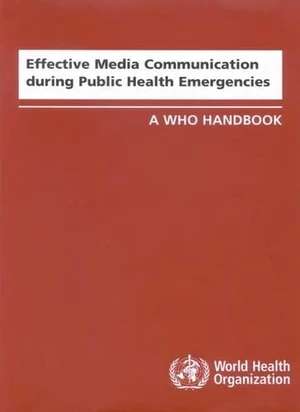Effective communication through the media is an essential responsibility of public health officials, particularly during emergencies. Urgent, high-concern situations present a unique communication challenge. Recent outbreaks of severe acute respiratory syndrome (SARS) and avian influenza, releases of anthrax and sarin, and the tsunami disaster in South-east Asia underline the importance of communication during public health emergencies. Poor communication can erode public support, fan emotions, undermine confidence, and amplify social and economic costs. Effective communication can rally support, calm a nervous public, provide much-needed information, encourage cooperative behaviors, and help save lives. This handbook presents an integrated, principle-based approach to media communication for those dealing with public health emergencies. Topics covered include how journalists gather and process information about public health emergencies, steps for planning and implementing an effective media communication programme, identifying and reaching target audiences, media interviews, avoiding traps and pitfalls, and preparing key messages. It is designed to improve those skills needed for preparing and delivering public health messages during an emergency. It will be useful to public health and government officials, senior managers in public and private sector organizations, hospital managers, public information officers, and experts responsible for communicating with the media. The Field Guide, produced as a separate book, summarizes the practical steps that can be taken to strengthen and enhance efforts made in this area. The target audiences for the Field Guide are WHO offices, field personnel and public health officials who are unfamiliar with media interactions or who wish to sharpen their skills in this area.
Price history
Oct 25, 2021
€13.08

